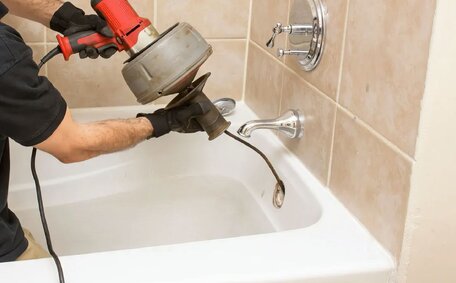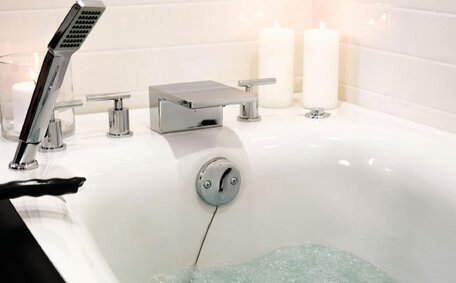Understanding the Basics: What Are Natural Gas and Propane?
Natural gas and propane both serve as energy sources for heating, cooking, and other applications in homes and businesses. While they share some similarities, there are important differences between these two energy sources.
Defining Natural Gas and Propane
Natural gas is a naturally occurring hydrocarbon gas mixture, primarily composed of methane. Propane, often associated with LPG (liquefied petroleum gas), emerges as a by-product of natural gas processing and crude oil refining.
In residential settings, the gas utilised often contains a mixture of propane and butane.
Key Differences
Some key differences between natural gas propane include:
- Energy content - Propane boasts a significantly higher energy content per cubic metre compared to natural gas, requiring less volume for the same energy output.
- Cost - Propane tends to be more expensive than natural gas for residential use on an equivalent energy basis.
- Storage and portability - Propane is liquefied under pressure for easier transportation and storage in tanks, while natural gas remains gaseous and travels through pipelines.
- Emissions - Both are clean burning, but propane produces slightly less CO2 emissions when combusted.
- Regarding risk assessment, the less dense nature of natural gas makes it less hazardous in leaks compared to propane, which is denser and can accumulate, posing a substantial safety risk.
Uses in the Home
Within domestic environments, both propane and natural gas can power a variety of appliances, including furnaces, water heaters, stoves, fireplaces, and clothes dryers. Boasting energy efficiency, both fuels are clean-burning, with propane offering more flexibility in locations without natural gas pipeline infrastructure. Ultimately, deciding to fuel your home with either option hinges on their availability and the associated costs for one’s specific property.
Origins and Composition
As a non-renewable resource, natural gas develops deep underground over millennia from the decomposition of organic matter. It consists primarily of natural gas methane, with smaller amounts of other hydrocarbons like ethane, propane, and butane. The chemical structure of methane has one carbon atom bound to four hydrogen atoms.
Propane, however, with a chemical structure of three carbon atoms bonded to eight hydrogen atoms (C3H8), differentiates itself from methane. Compared to methane, propane has higher energy density, but requires pressurisation for storage and transportation as a liquid rather than a gas.
Although propane and natural gas can both function efficiently as fuel gases, propane necessitates additional processing to be practical for use. Comprehending their origins and chemical structures helps unravel key distinctions in using natural gas and propane as crucial energy sources.
Storage and Transportation Methods
Natural gas and propane have very different methods of storage and transportation:
Natural Gas
Natural gas, in its gaseous state, is transported from production sites to consumers via a widespread network of pressurised pipelines. Natural gas pipelines transport the fuel directly to homes and businesses with no need for specialised storage on-site.
Propane
Unlike natural gas, propane is transformed into liquefied natural gas under pressure for more efficient transportation and storage. Propane is moved from refineries to bulk storage sites in pressurised tanks and subsequently distributed to consumers in portable tanks and cylinders. These propane tanks, similar to compressed natural gas CNG containers, can be stored above ground, underground, or even on rooftops for easy access.
- Natural gas travels via pipeline so storage methods are not a major concern for the end user.
- Propane depends on a series of pressurised, portable tanks for its transportation and storage needs.
The need for pressurisation and specialised tanks makes adopting propane systems more complex for homes and businesses not served by existing natural gas pipelines. However, propane also offers ease of portability which can make it a suitable option for remote properties without pipeline access.
Delivery Infrastructure Requirements
The infrastructure required to deliver natural gas versus propane to homes and businesses differs significantly:
Natural Gas Delivery Infrastructure
Natural gas requires an extensive pipeline network to deliver the fuel. Underground gas mains and service lines must be installed to transport natural gas from interstate pipelines into local utility distribution systems. From there, it travels through metre sets into homes and businesses for end use in appliances.
Propane Delivery Infrastructure
Propane relies on truck-based deliveries of pressurised tanks. No pipelines or permanent infrastructure are needed.
Bulk storage facilities accommodate substantial quantities of propane, which is then filled into small cylinders or sizeable tanks for on-site use. These pressurised tanks are delivered to homes and businesses, facilitating convenient on-site fuel access and storage.
- Natural gas requires capital investment in local pipeline infrastructure.
- Propane offers flexibility with truck-based tank delivery to areas lacking pipelines.
Ultimately, natural gas delivery requires substantial infrastructure enabled by pipeline access. Propane offers an alternative for properties not served by pipelines, with transportable pressurised tanks providing on-site fuel storage as needed.
On-Site Storage Options
Propane requires on-site storage tanks, while natural gas typically does not. There are several options for safely storing propane fuel at homes or businesses:
Above-Ground Tanks
Above-ground propane tanks are a popular choice for residential backup power systems. Smaller tanks need refilling more often.
Tanks can be leased from propane suppliers and are available in sizes from 120 to 1,000 US gallons.
Underground Tanks
For some residential and many commercial sites, it is preferable to install propane tanks underground. This provides security, frees up outdoor space, and has aesthetic advantages. Although more costly to install, underground tanks have a reduced risk of damage compared to above-ground alternatives.
Key Differences in On-Site Fuel Storage
- Natural gas requires no on-site storage while propane relies on pressurised tanks.
- Propane tanks can be installed above or below ground based on space and budget.
Propane’s need for stored fuel gives it flexibility in remote areas but requires more planning for safe, long-term storage conditions than continuously flowing natural gas supplies.
Comparing Efficiency: BTUs, Appliances, Heating Value
Understanding BTUs
BTU, or British Thermal Unit, is a standard measurement used to compare the energy content of fuels. Specifically, one BTU represents the amount of heat required to raise the temperature of one pound of water by one degree Fahrenheit.
Comparing Natural Gas and Propane BTUs
On a BTU basis:
- One cubic foot of natural gas has approximately 1,030 BTUs.
- One gallon of propane has about 91,500 BTUs.
Consequently, propane has a substantially higher energy density, allowing more BTUs to be stored in a compact volume. You would need about 89 cubic feet of natural gas to equal the BTUs in one gallon of propane.
Implications for Appliances and Heating
Appliances burn hotter with propane due to its greater BTU content per gallon, but they can be fine-tuned to work with either fuel source. For heating systems, propane’s energy density means smaller fuel storage volumes needed to heat spaces.
On the other hand, appliances using natural gas gain efficiency benefits from the stable pressure provided by gas pipelines. Both fuels are clean, efficient options for domestic and commercial use.
Cost Considerations: Equipment, Fuel Prices, Installation
When comparing the costs of natural gas versus propane, there are several factors to consider:
Equipment Costs
Propane heating systems and appliances generally cost more than their natural gas counterparts. This is because propane systems require pressurised tanks, regulators, and other specialised equipment for on-site fuel storage and delivery.
Fuel Costs
The cost of propane often exceeds that of natural gas when measured per British thermal unit (BTU). However, propane prices can fluctuate more than natural gas. Regional supply and demand trends can cause propane prices to spike during high-draw seasons.
Installation Costs
Installing new gas service lines can be expensive, and sometimes cost prohibitive for homes not already using natural pipelines. The flexibility of propane tank installations allows it to better serve remote properties.
Long-Term Cost Considerations
Over the long term, natural gas enjoys a less expensive cost advantage for most residential uses. However, propane offers energy independence and can make sense for rural properties without pipeline access.
Ultimately, buyers should calculate total cost of ownership according to their needs. This means factoring in fuel costs, hardware prices, infrastructure requirements, and convenience.
Environmental Impact: Leaks, Emissions, Clean Burning
Leakage and Safety
Natural gas, being a natural gas lighter than air, disperses quickly and poses less risk of explosion when leaks occur. The issue of leaks highlights the critical safety considerations between propane, which can accumulate in low-lying areas as it is heavier than air. This means extra precautions are needed to prevent propane leaks in homes and businesses.
Emissions Profile
Both natural gas and propane burn cleanly with relatively low emissions when combusted efficiently. On a per-unit-of-energy basis, propane incurs a slightly smaller carbon footprint, and both fuels emit fewer CO2 emissions than numerous other fossil fuels due to their clean-burning properties.
Methane is a far more potent greenhouse gas than CO2 though. And leaks along natural gas infrastructure can release methane, contributing to climate change. More maintenance is needed to prevent methane slipping into the atmosphere.
Environmental Advantages
Compared to fuels like heating oil or coal, both propane liquefied petroleum gas and natural gas are considered clean fuels. Propane, a by-product of gas processing, makes productive use out of what would otherwise emit greenhouse gases.
When combusted effectively, natural gas and propane offer environmentally friendly alternatives with lower emissions than oil or coal.
Safety Protocols: Leak Detection, Responding to Emergencies
Detecting Gas Leaks
It is important to know how to detect leaks for both natural gas and propane systems.
Given that natural gas is lighter than air, its leaks tend to rise and disperse.
If a leak occurs, the gas will sink and puddle in low spots since propane vapour is heavier than air.
To detect leaks, a distinctive rotten egg smell is added to propane by suppliers through the inclusion of ethyl mercaptan. Use soapy water to test for leaks and bubbles. Since propane is naturally odourless, detecting leaks can be more challenging.
Responding to Gas Emergencies
If you suspect a major natural gas or propane leak:
- Evacuate the area immediately and get to fresh air
- Contact emergency services on 000 from a safe location.
- Do not operate any switches or appliances
- Warn others to stay away from the area
It’s essential to heed any signs of a gas leak, from the telltale odour to bubbling at the joints of pipes. Leave the premises and call emergency services for assistance.
Making the Best Choice for Your Home
When deciding between propane natural gas for your home, consider factors like:
Installation and Access
Homes with existing natural gas lines and appliances may find it easiest to remain on the pipeline grid. Switching from natural gas to propane incurs additional expenses for new equipment and set-up. Remote properties without pipeline access, however, can benefit from the portability of propane delivery and storage.
Usage Patterns and Efficiency
Look at your household energy use - are you primarily using gas for heating and cooking? For space heating, propane furnaces can be an efficient choice, though natural gas boilers benefit from consistent pipeline pressure. Both fuels can supply ranges and outdoor amenities like pool heaters.
Budgeting and Total Costs
While propane tends to cost more upfront, natural gas bills can become expensive for high-demand households over time. Conduct a long-term financial analysis of both fuels before deciding to convert any appliances or equipment.
Call the Experts at Marrickville Plumbing
For Sydney-area homes interested in installing or converting to natural gas or propane systems, call Marrickville Plumbing to evaluate your options. Our qualified technicians can assess your needs and recommend the safest, most affordable fuel solutions for your household.






